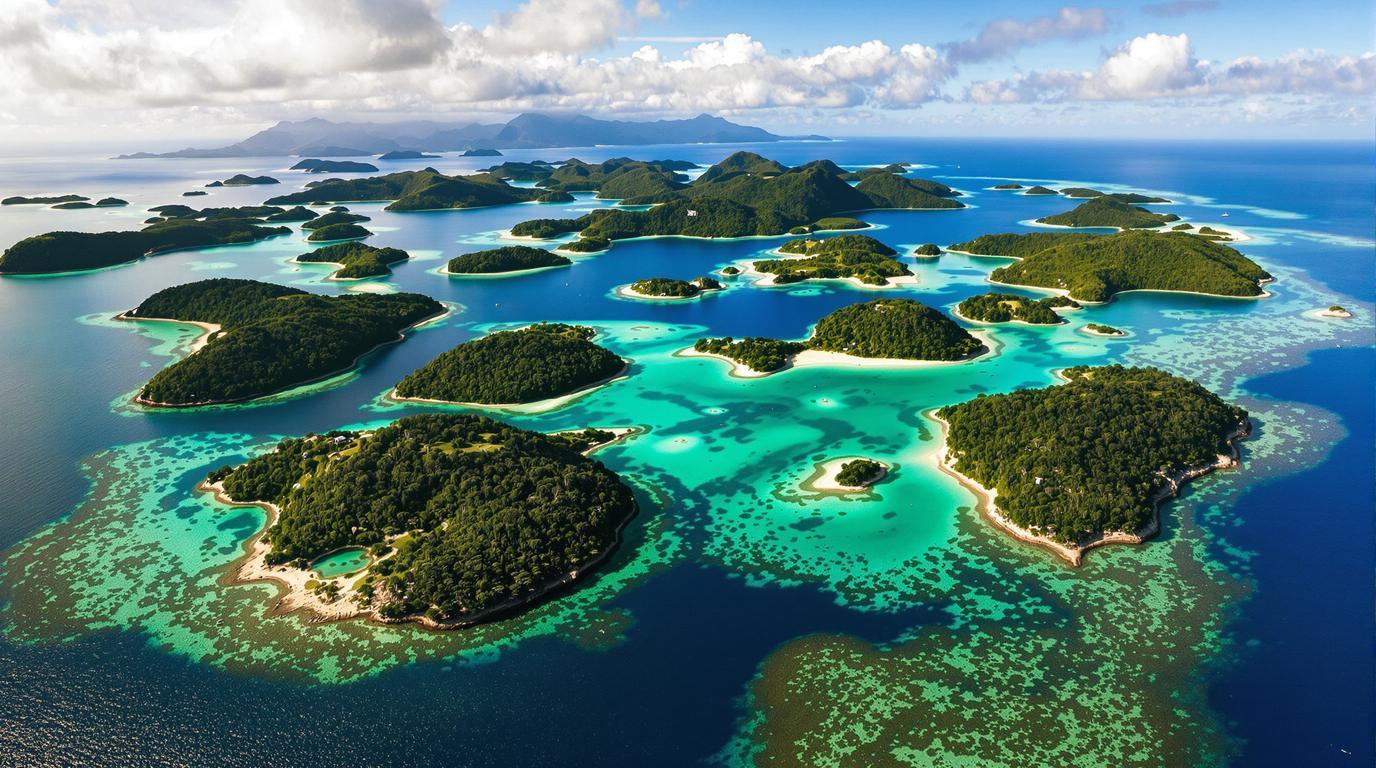The crystalline waters of Te Puna lap against 144 scattered islands, where Māori iwi have quietly protected their ancestral waters for generations. In July 2025, as Northern Hemisphere travelers seek subtropical refuge, local guardians face mounting pressure to preserve what tourism brochures can’t capture—the spiritual heart of Aotearoa’s most sacred marine sanctuary.
What makes the Bay of Islands extraordinary isn’t just its 75°F winter warmth or the famous “Hole in the Rock” passage. It’s the delicate balance between sharing paradise and protecting it, where traditional Māori stewardship meets modern conservation challenges in ways that would make the Great Barrier Reef’s management look simple.
Local Māori leader Tane Williams recently stated: “We don’t need mass tourism. When everyone was in COVID-19 lockdown, Papatūānuku was breathing again.” This sentiment echoes across the region’s 47 remaining cruise ship visits—down from 92 just two years ago, as communities actively resist becoming another overcrowded paradise.
Why iwi communities guard their marine sanctuary
Sacred sites face unprecedented pressure
The wāhi tapu (sacred places) scattered across these 144 islands aren’t museum pieces—they’re living cultural landscapes where Māori protocols still govern access. Traditional names like Te Puna (The Sacred Spring) and Omākiwi Cove carry spiritual significance that tourism maps can’t convey, where ancestral connections run deeper than any visitor experience.
Environmental stewardship meets tourism reality
Over 1,000 hectares of bay waters remain closed to anchoring due to invasive caulerpa seaweed, with Māori-led monitoring teams working tirelessly to protect marine ecosystems. The irony isn’t lost on locals—the very beauty that attracts visitors requires their absence to survive, creating a preservation paradox that few tourism destinations face so directly.
The 47-ship compromise that changes everything
From 92 to 47: community resistance works
The dramatic 49% reduction in cruise ship visits reflects more than economic pressures—it’s active community resistance to mass tourism. Local iwi didn’t just witness this decline; they advocated for it, understanding that Papatūānuku (Earth Mother) needs breathing room to regenerate between visitor waves.
Biofouling regulations protect cultural waters
New Zealand’s strictest anti-fouling measures serve dual purposes: protecting marine biodiversity and honoring Māori obligations to safeguard ancestral waters. What outsiders see as bureaucratic barriers, locals recognize as cultural protocols translated into modern policy, where environmental protection becomes an act of spiritual stewardship.
Traditional winter ceremonies tourists rarely witness
Matariki celebrations reveal authentic culture
The Matariki Pēwhairangi Festival (June 14-28) showcases what respectful cultural tourism looks like—small groups, local guides, and genuine education about Māori astronomy and seasonal cycles. These intimate gatherings demonstrate how visitor experiences can honor tradition rather than commodify it, creating connections that transcend typical tourist encounters.
Seasonal protocols maintain cultural integrity
July’s subtropical winter coincides with traditional reflection periods, when Māori communities historically gathered strength for the coming year. Smart travelers understand that visiting during these contemplative months means embracing slower rhythms and deeper cultural engagement rather than Instagram-ready adventure activities.
What protection really means for visitors
Sustainable access requires cultural understanding
The community-led tourism model emerging in Bay of Islands prioritizes quality over quantity, with local operators offering educational experiences that support iwi initiatives rather than competing with them. Similar protection efforts in Thailand show how community resistance can create more meaningful travel experiences for everyone involved.
The preservation paradox creates better experiences
Reduced visitor numbers mean authentic encounters with Māori culture, cleaner waters for swimming, and wildlife viewing opportunities that disappear when cruise ships disgorge thousands daily. The mathematical reality is simple: fewer visitors create exponentially better experiences for those who do come, making protection measures a gift to thoughtful travelers rather than a barrier.
Bay of Islands’ iwi communities aren’t trying to stop tourism—they’re trying to save it from itself. Their protective approach offers a glimpse of what sustainable paradise could look like, where cultural respect and environmental stewardship create visitor experiences that honor both people and place.
The question isn’t whether you can visit Te Puna’s sacred waters, but whether you’ll approach them with the reverence they deserve. Like other protected cultural sites, the Bay of Islands rewards visitors who understand that some treasures are worth protecting, even from those who would love them. In July 2025, that understanding makes all the difference between being a tourist and being welcome.
Planning your respectful Bay of Islands visit
When should I visit to minimize cultural impact?
July offers ideal conditions with 75°F temperatures and fewer crowds, coinciding with traditional Māori reflection periods. This timing allows for deeper cultural engagement while supporting community efforts to manage visitor numbers sustainably.
How can I support iwi-led conservation efforts?
Choose Māori-operated tours that directly fund environmental protection and cultural preservation. These experiences offer authentic insights while ensuring tourism revenue supports the communities working to protect these sacred waters.
What cultural protocols should visitors observe?
Respect anchoring restrictions in protected areas, avoid photographing sacred sites without permission, and engage with local guides who can explain the cultural significance of locations you’re visiting.
How does this compare to other protected marine destinations?
Unlike Australia’s Great Barrier Reef, which focuses primarily on environmental protection, Bay of Islands integrates cultural preservation with marine conservation, creating a more holistic approach to sustainable tourism that other destinations are beginning to emulate.
Are there alternatives if visitor numbers are restricted?
The Hokianga Harbour and lesser-known coastal areas offer similar cultural experiences with even fewer crowds, allowing visitors to experience authentic Māori hospitality while supporting broader regional conservation efforts.
